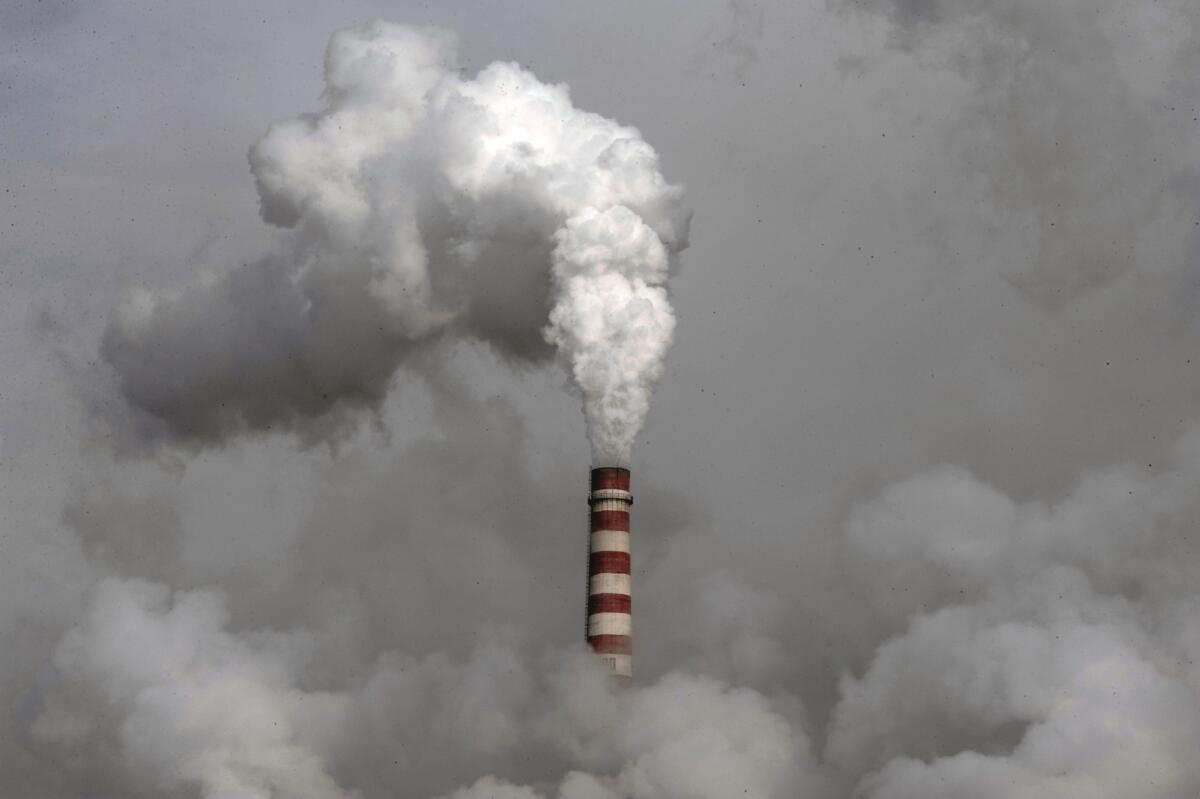World energy use to jump 56% by 2040, study says

- Share via
Global energy consumption is expected to rise 56% by 2040 with a changing composition of energy sources, with China and India driving the rate increase far more than the rest of the world.
According to a new report by the U.S. Energy Information Administration, fossil fuels are expected to keep making up much of the energy supply, with petroleum and other liquid fuels remaining the largest source worldwide. Their share of that growing energy consumption is expected to shrink somewhat in coming decades, though, from 34% across all fuel sources in 2010 to 28% in 2040, researchers said.
Liquid fuel consumption is expected to more than double in China and India over the course of the 30 years. “Rising prosperity in China and India is a major factor in the outlook for global energy demand,” said Adam Sieminski of the Energy Information Administration. “These two countries combined account for half the world’s total increase in energy use through 2040.”
PHOTOS: 10 cheapest cars that get 35 mpg or better
In China, liquid fuel consumption is expected to rise from 9 million barrels a day to 20 million, and in India, it is to ramp up from 3 million barrels a day to 8 million. Together, they’ll surpass consumption in the U.S., Canada, Mexico and Chile combined. Analysts project that daily production of liquid fuels will rise by 28.3 million barrels from 2010 to 2040 to accommodate that demand.
Coal is expected to hold its status as the world’s second-largest energy source. In 2010, China consumed 47% of total world levels, the U.S. 14% and India 9%. The share of those three nations combined will increase 5 percentage points to 75% by 2040, according to the study. Total world coal consumption is expected to rise from 147.4 quadrillion Btu in 2010 to 219.5 quadrillion Btu in 2040 -- about 27% of the projected total energy consumption. (One Btu, or British thermal unit, is the amount of energy needed to heat 1 pound of water 1 degree Fahrenheit.)
J.R. DeShazo, a professor of public policy at UCLA, said the report’s numbers were inflated. “This projected growth and continued reliance on coal is probably an overestimate,” he said. With environmental pollution already a top concern particularly in China’s and India’s urban centers, DeShazo said he suspected these countries would develop self-correcting mechanisms based on feedback from citizens.
“I think you’re going to see air quality become a bigger priority,” he said. “Consumption is still going to grow, but in terms of composition, there’s going to be an even greater push for cleaner resources.”
The Energy Information Administration’s study also projects renewables and nuclear power will be the two fastest-growing energy sources. Renewables’ share of total worldwide energy use is expected to rise from 11% in 2010 to 15% in 2040, while nuclear will rise 2 percentage points to reach 7% in 2040. DeShazo said that trend, however small the percentages in the larger fuel portfolio, was unsurprising because of policy priorities.
“Historically, coal has been both the cheapest and the dirtiest fuel,” DeShazo said. “That’s expected to continue to be true over the next 20 to 30 years.... We recognize that, and in place are a set of policies to incentivize cleaner fuel development. That’s why they’re the fastest -- they’re the cleanest.”
ALSO:
Drill for oil in Hermosa Beach? No way, some residents say
Halliburton pleads guilty to destroying evidence in BP oil spill
Electric cars could be cost-competitive with gas-powered in 2017
More to Read
Inside the business of entertainment
The Wide Shot brings you news, analysis and insights on everything from streaming wars to production — and what it all means for the future.
You may occasionally receive promotional content from the Los Angeles Times.








